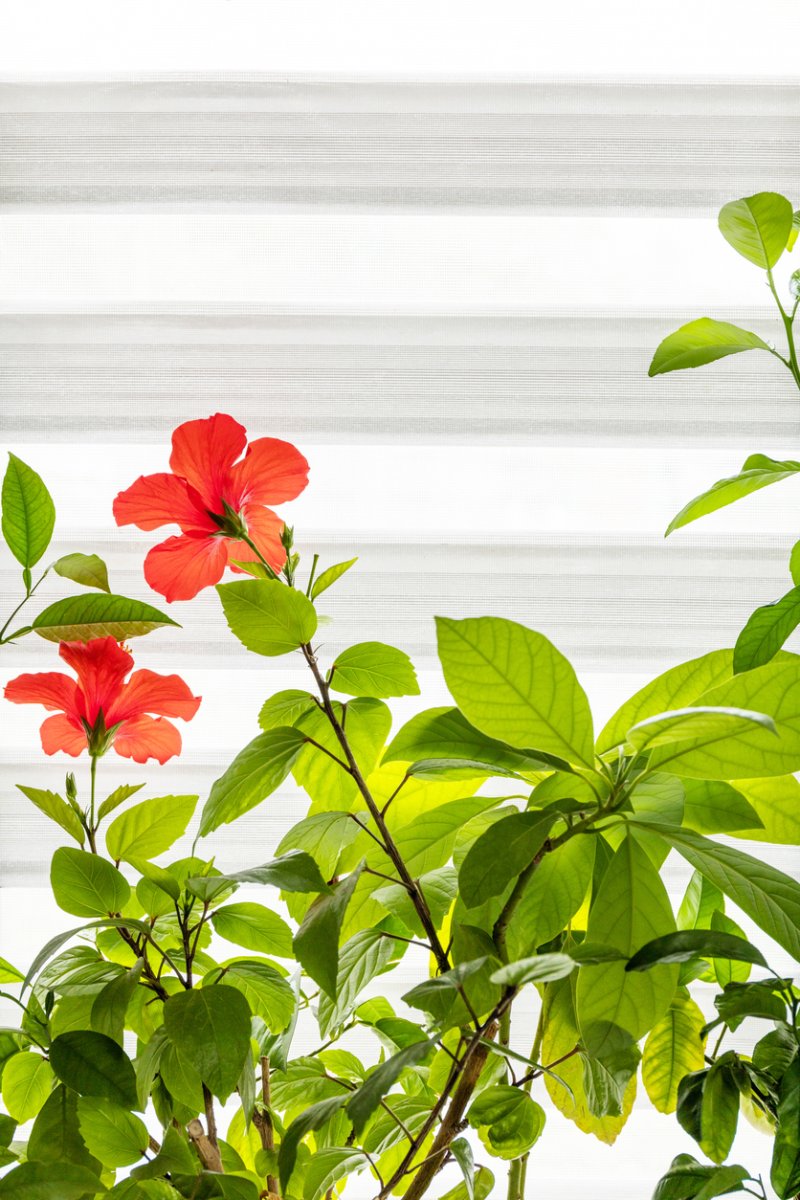

We may earn revenue from the products available on this page and participate in affiliate programs. Learn More ›
Home Advice You Can Trust
Tips, tricks & ideas for a better home and yard, delivered to your inbox daily.
Plenty of gardeners place their houseplants outdoors for the summer and enjoy them indoors the rest of the year. So why not try a similar strategy—and save a little money while you’re at it—by bringing your favorite cold-tender plants inside when the temperature drops so they’ll be ready to shine again when summer rolls around?
Before you bring your outdoor plants in for the winter, you’ll need to do a bit of preparation. Start by inspecting them for pests and treating, if necessary. Repot if a plant needs it, and cut down on (or eliminate) fertilizing. Some plants can simply be brought indoors as houseplants, others should be forced into dormancy for a few months of cool storage, and still others are best kept going by making rooted cuttings. Read on to learn about popular cold-tender plants that you can bring inside each winter and then continue to enjoy outside for many summers to come.
Potted Palms (Aracaceae family)
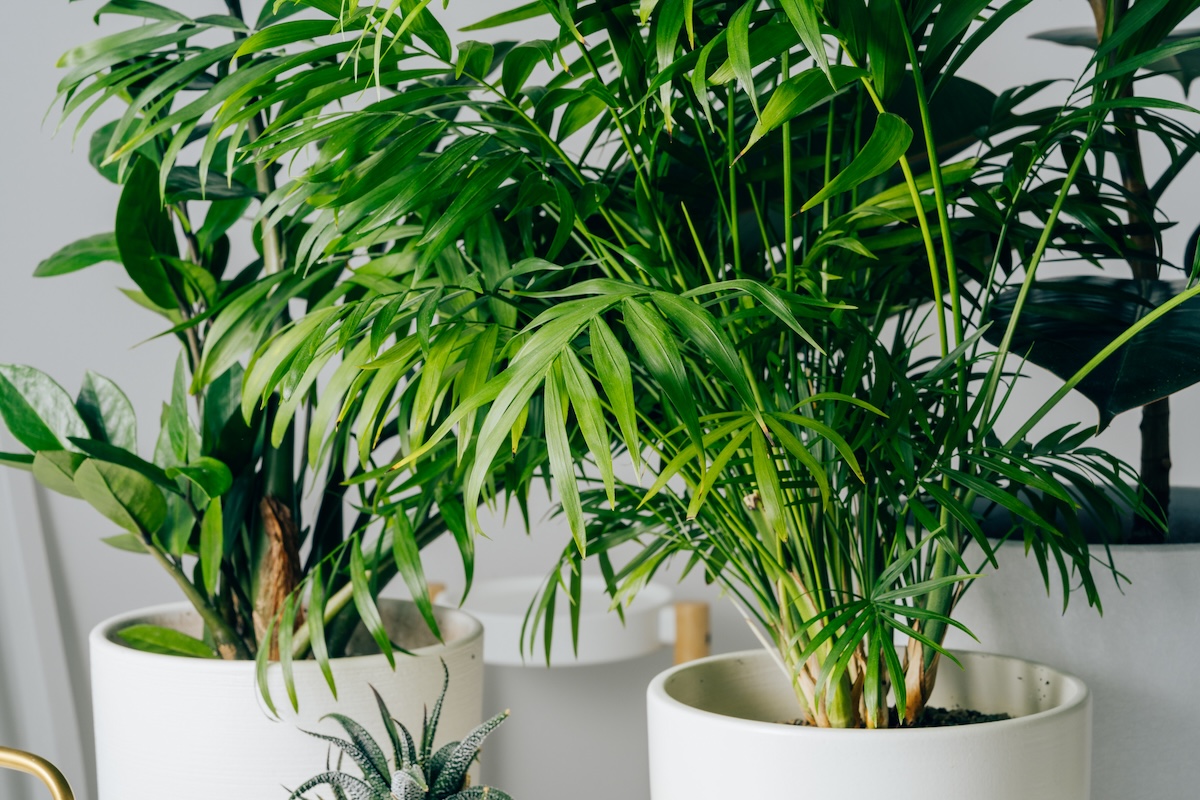
Photo: Natalia Gdovskaia via Getty Images
While some palm trees are hardy in the winters of the Deep South, most palms need help to survive winter temperatures, even only to 55 to 60 degrees Fahrenheit. It’s possible to cover and winterize some palms planted in the ground, but potted palms should come indoors (preferably to a bright, humid spot). Move palms to an indoor location that gets lots of light. Water them regularly to keep the soil moist until spring, and carry them back outdoors after nights warm back up to at least 50 or 60 degrees.
Cacti (Cactaceae family)
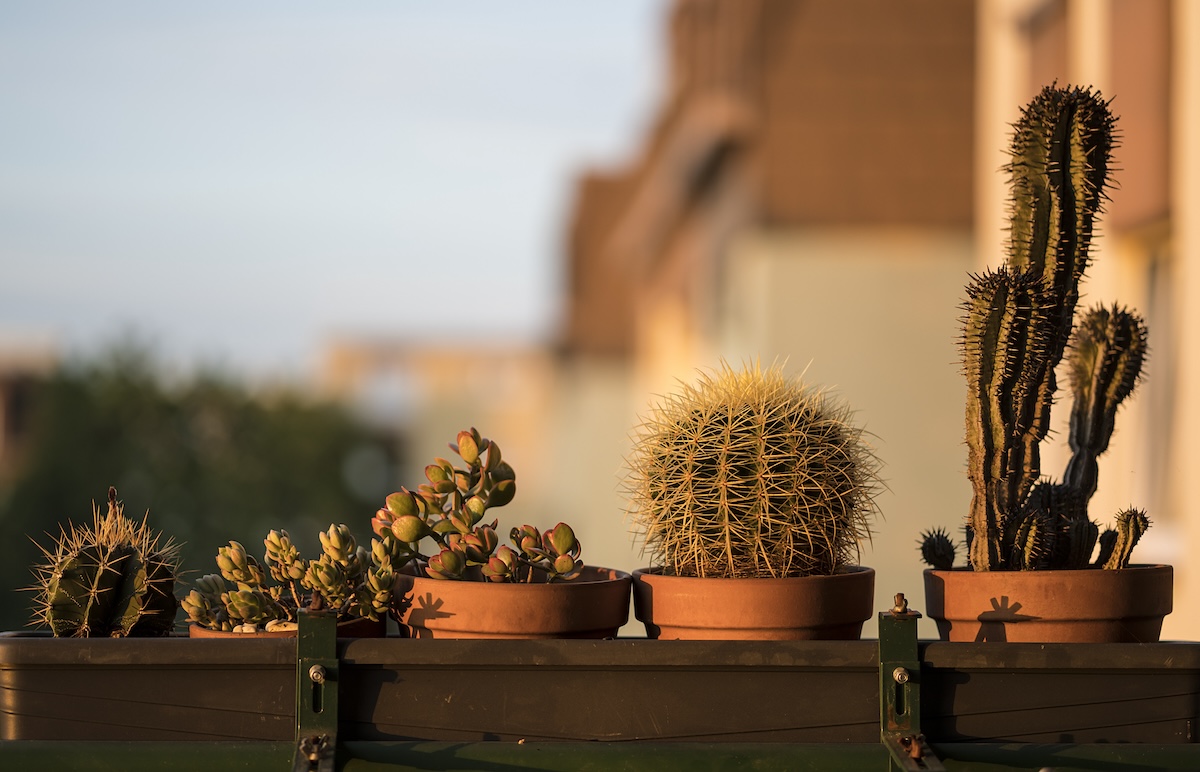
Photo: Yurii Pidopryhora / 500px via Getty Images
Leave cacti outdoors as late into the season as possible so that the combination of shorter days and cooler nights stimulates a dormancy response. You’ll need to keep an eye on the thermometer and know the low-temperature threshold for your particular type of cactus. Some species may be able to withstand 20-degree temperatures, but others cannot. If unsure, move potted cacti indoors as soon as temperatures drop to about 45 to 50 degrees Fahrenheit.
Stop watering cacti 3 to 4 weeks before the move so the plants are dry, and check them carefully for pests like mealy bugs or mites. In general, cacti do best in a cool location with minimal water, as they go dormant. Transition them back outside in early spring, gradually introducing sunlight if the plants show any sign of burning.
Potted Citrus Trees (Citrus species)
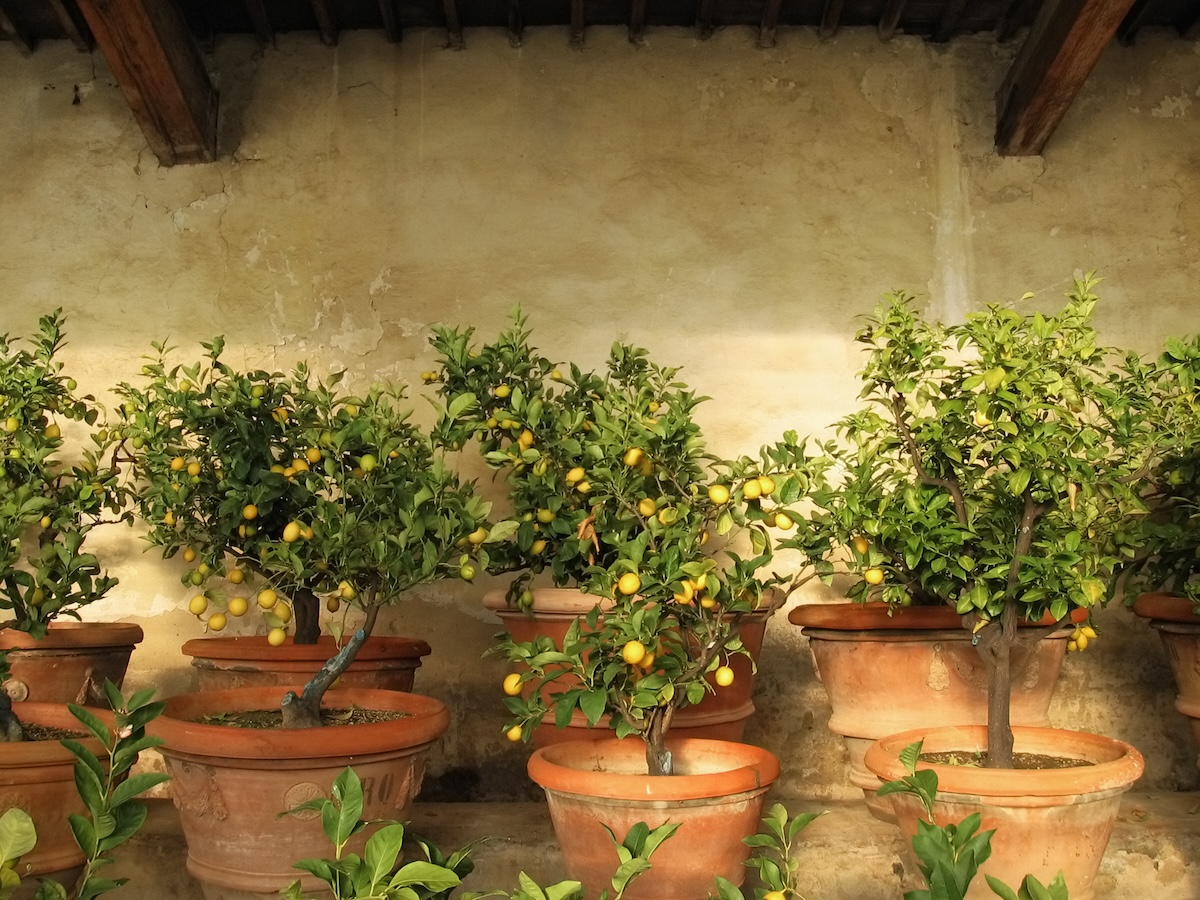
Photo: Busà Photography via Getty Images
Citrus trees can actively grow and flower, and may also ripen fruit, in winter if they’re pollinated. Even without winter growth, you can protect citrus plants during cold weather. As the days get shorter, move potted citrus trees (typically, these are dwarf varieties) to an interim space outdoors that gets some protection, like a porch with radiant heat, and cut back on watering.
Finally, move the citrus tree into a brightly lit room, ideally one between 55 and 70 degrees Fahrenheit, before freezing weather arrives. Citrus plants are sensitive to the drying effects of air, so it’s best to position them away from heat vents and cold drafts. Provide supplemental humidity with a pebble tray or regular misting.
Tropical Hibiscus (Hibiscus rosa-sinensis)
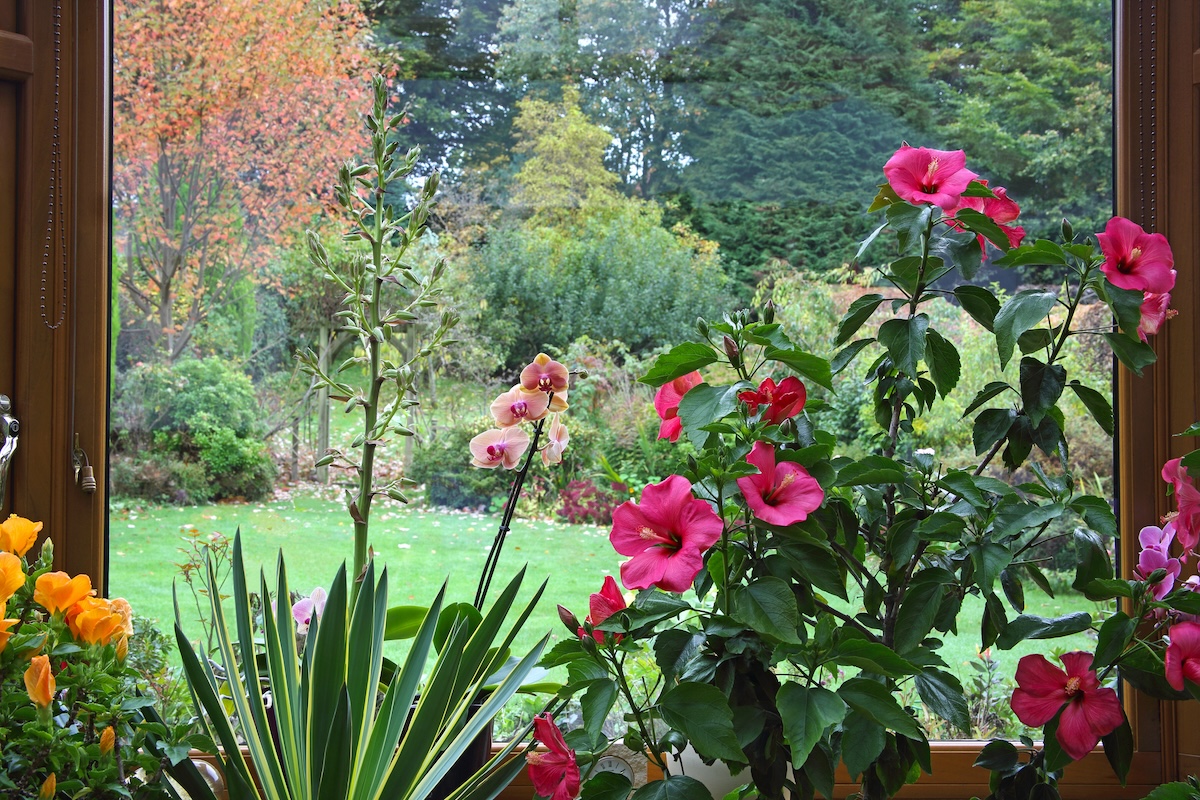
Photo: Rosemary Calvert via Getty Images
Move tropical hibiscus plants indoors when overnight temperatures reach the low 50s. Place them in a brightly lit room, and treat them like regular houseplants. Cut back on watering and fertilizing during these cooler months. Try to avoid heat vents and cold drafts, and put the plants on a pebble tray to boost the ambient humidity, if necessary. Prune tropical hibiscus three times during late fall and winter (October, December, and February) to maintain the plant’s shape.
Jasmine (Jasminum species)
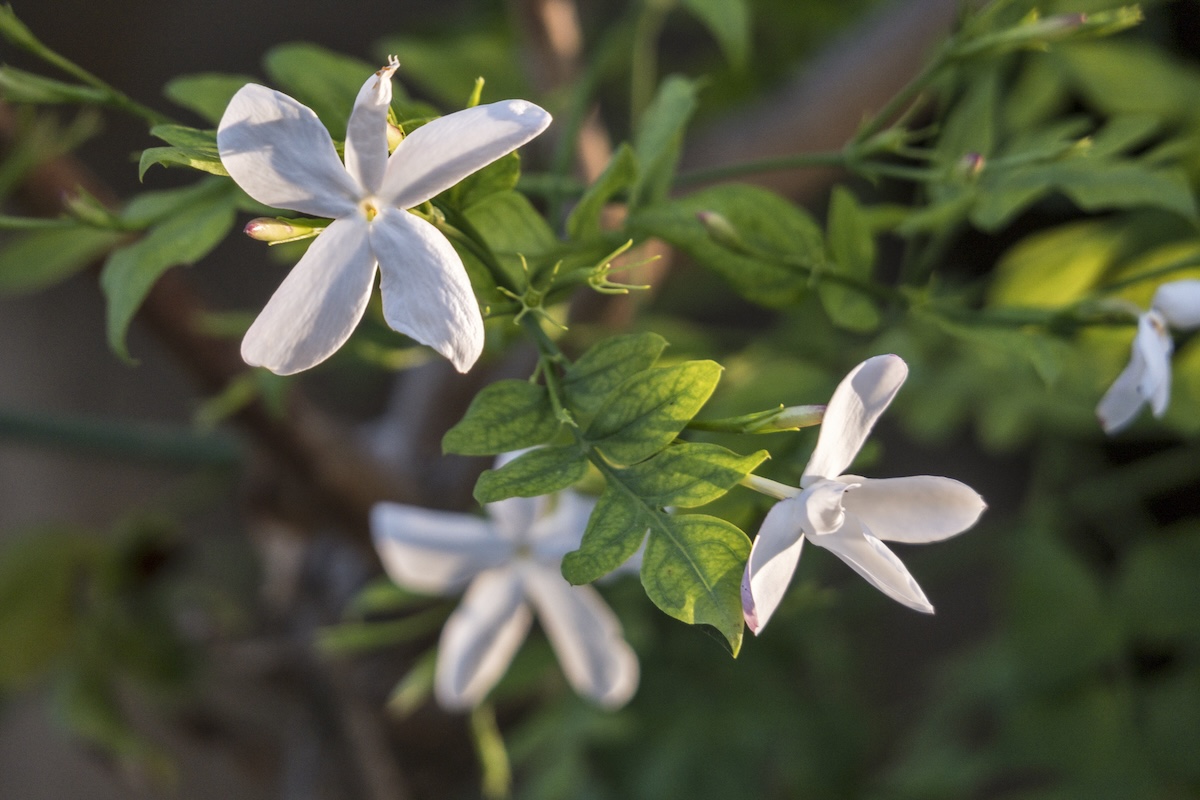
Photo: Izzet Keribar via Getty Images
Prune jasmine vines by at least 25 percent before bringing them in for winter, letting them adjust gradually by bringing them inside at night and slowly lengthening the time spent indoors. Be forewarned: Leaves will probably fall off—maybe all of them—but new ones will grow again in time. Bring jasmine into a sunny room before frosty weather arrives, and keep it away from drying air vents and drafts. Use a pebble tray to boost humidity to about 30 percent.
Coleus (Coleus scutellarioides)
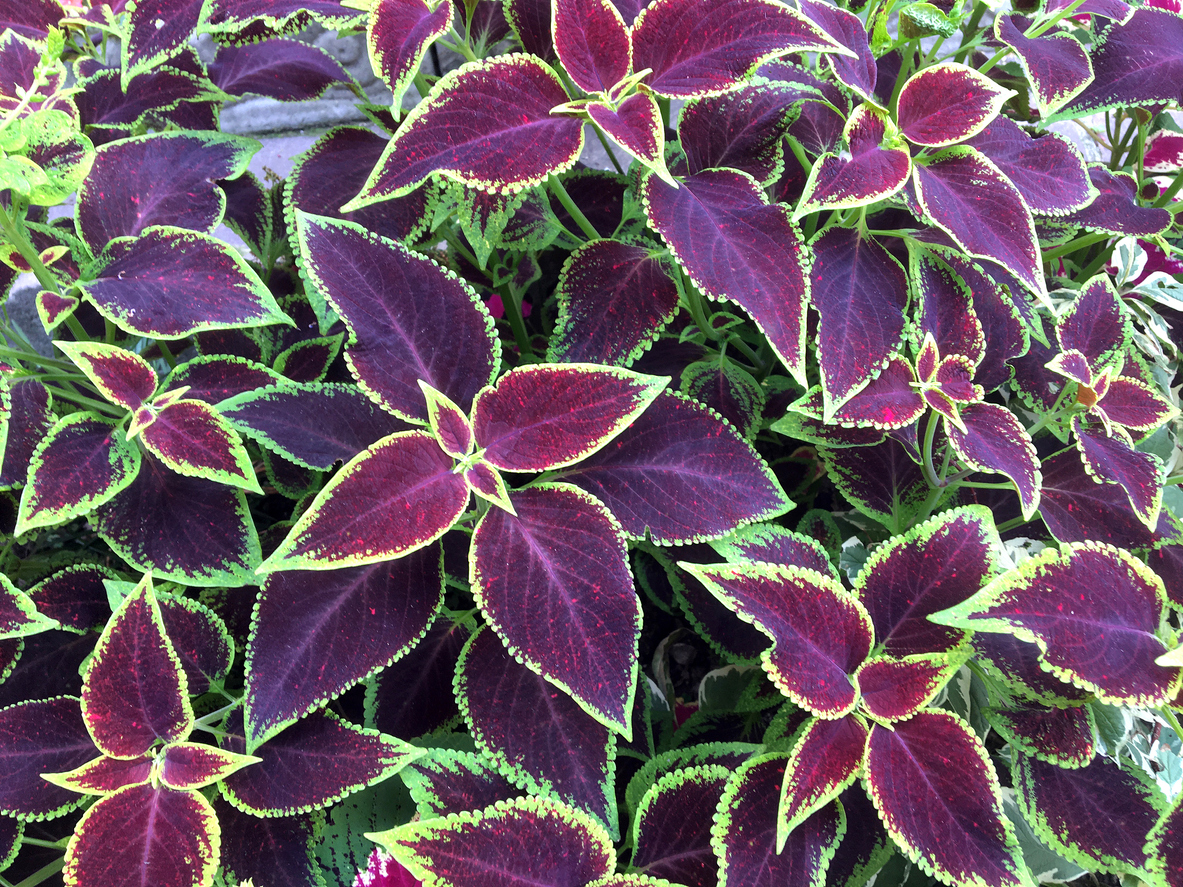
Photo: iStock
Coleus plants are grown for their stunning foliage and adaptability to shade. The plants are annuals in most regions, though, since they do not like temperatures below 50 degrees Fahrenheit and cannot survive temperatures below freezing. Bring the potted plant indoors once nights hover near 50 degrees. Repot the plant if it is outgrowing its container. Another option is to propagate coleus stems to use next spring. Cut a 6-inch healthy stem, remove low leaves, and dip the stem in a rooting hormone before planting it in a container with moist potting mix. Cover the container with a plastic bag for a few weeks and keep it in a warm and sunny spot; water regularly.
Elephant Ears (Colocasia esculenta)
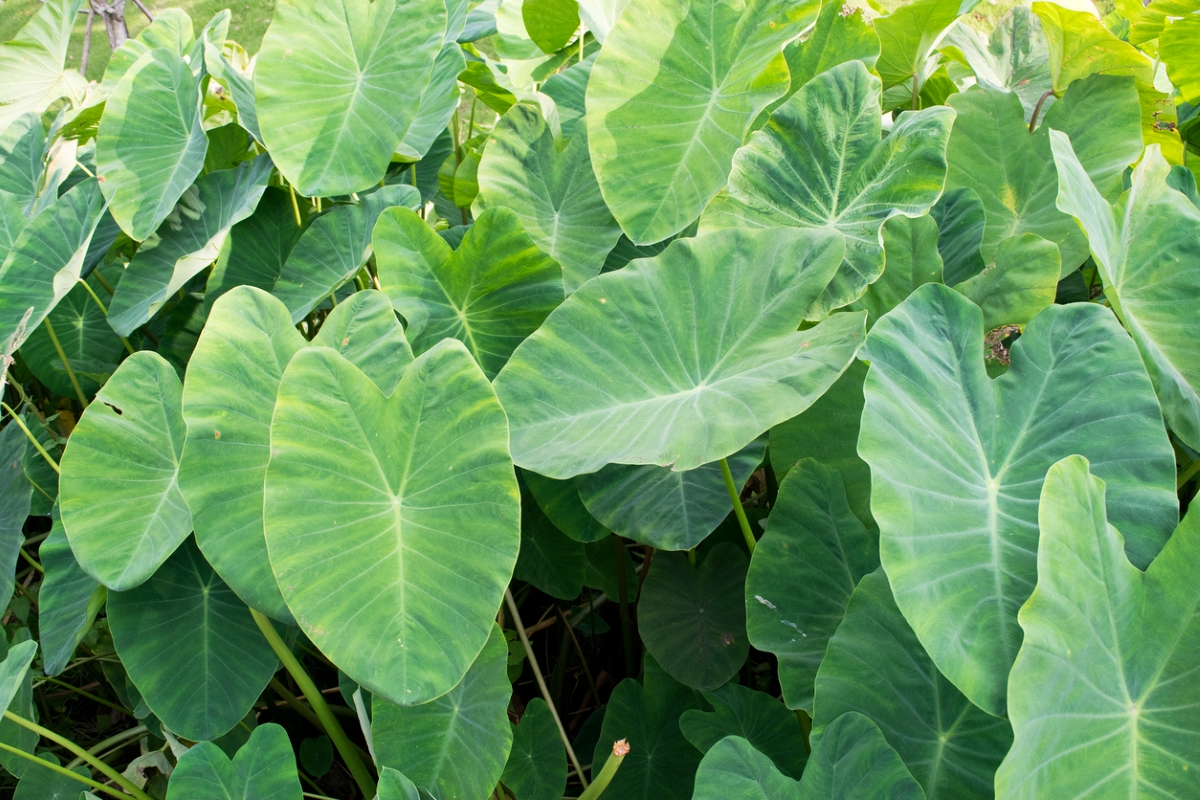
Photo: iStock
Elephant ears, or taro, is a tropical plant that can survive a light frost only; a true freeze will kill the tuber. Simply move potted elephant ears indoors to a cool bright location. For those grown in the ground, carefully dig up the elephant ear tuber when cool weather approaches and the foliage dies back (they won’t survive winter outdoors in USDA Zone 6 and lower). Cut stems down to about 4 to 6 inches, and gently wipe off excess dirt. Place the tuber in a warm, dark location with good air circulation to dry out for a few days. Wrap the bulbs in paper or drop them in a paper bag and store them in a cool, dry, dark place. Check them periodically for rot (throw rotten ones away) and insect damage (treat with an insecticide). When bringing the plant indoors, beware that nearly all its parts are toxic to pets and people if ingested.
Boston Fern (Nephrolepis exaltata ‘Bostoniensis’)
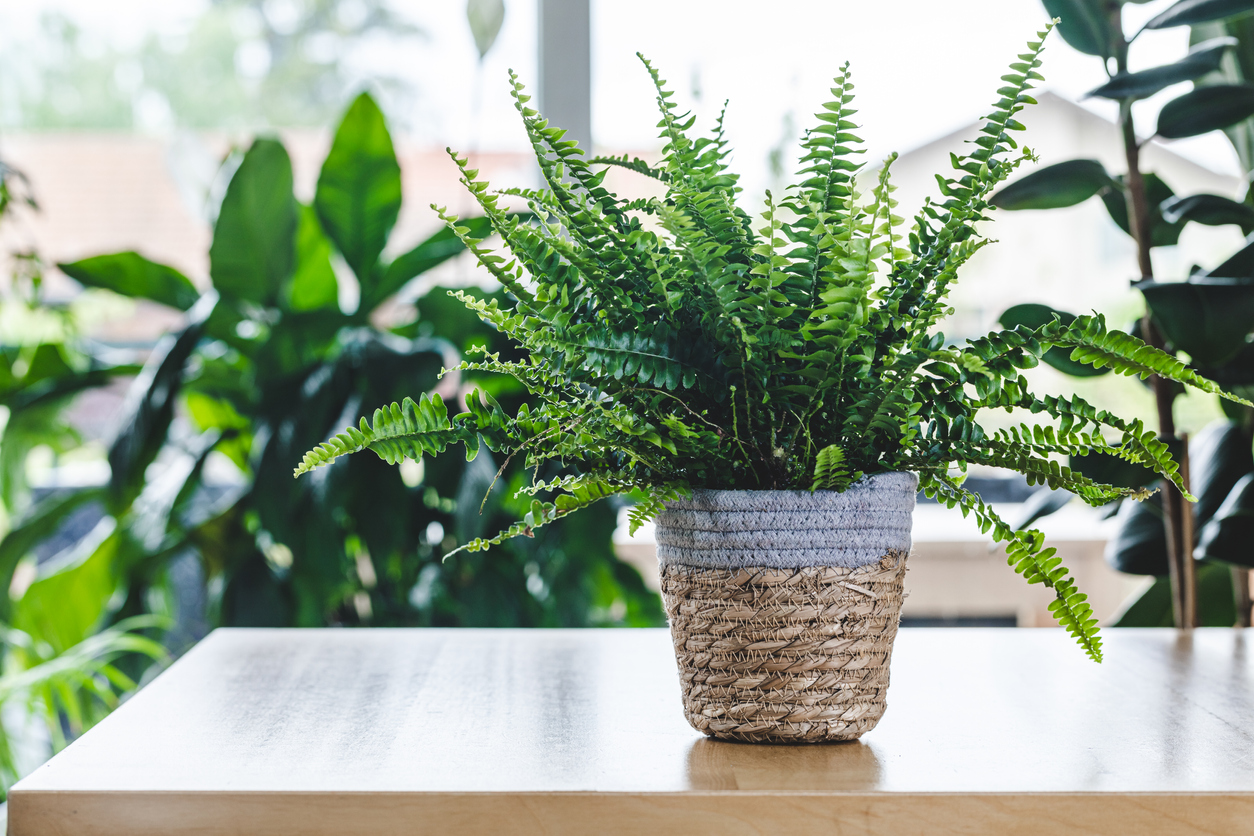
Photo: iStock
It is technically possible to bring Boston ferns inside the home and overwinter them in their active state, but it gets very messy very quickly. Instead, let them go to sleep. Put them in a cool, moderately light to dark location that will not freeze, like an unheated basement or garage. Before bringing in your fern, hose the plant down on a warm (60-degree Fahrenheit) day to spray off insects and loose leaves. Give it a light trim for shape and shake and ruffle the fronds to drop debris before carrying the plant to its indoor spot. moisten the soil only when dry until spring. Don’t be alarmed if some leaves pale or drop.
Geranium (Pelargonium hybrids)
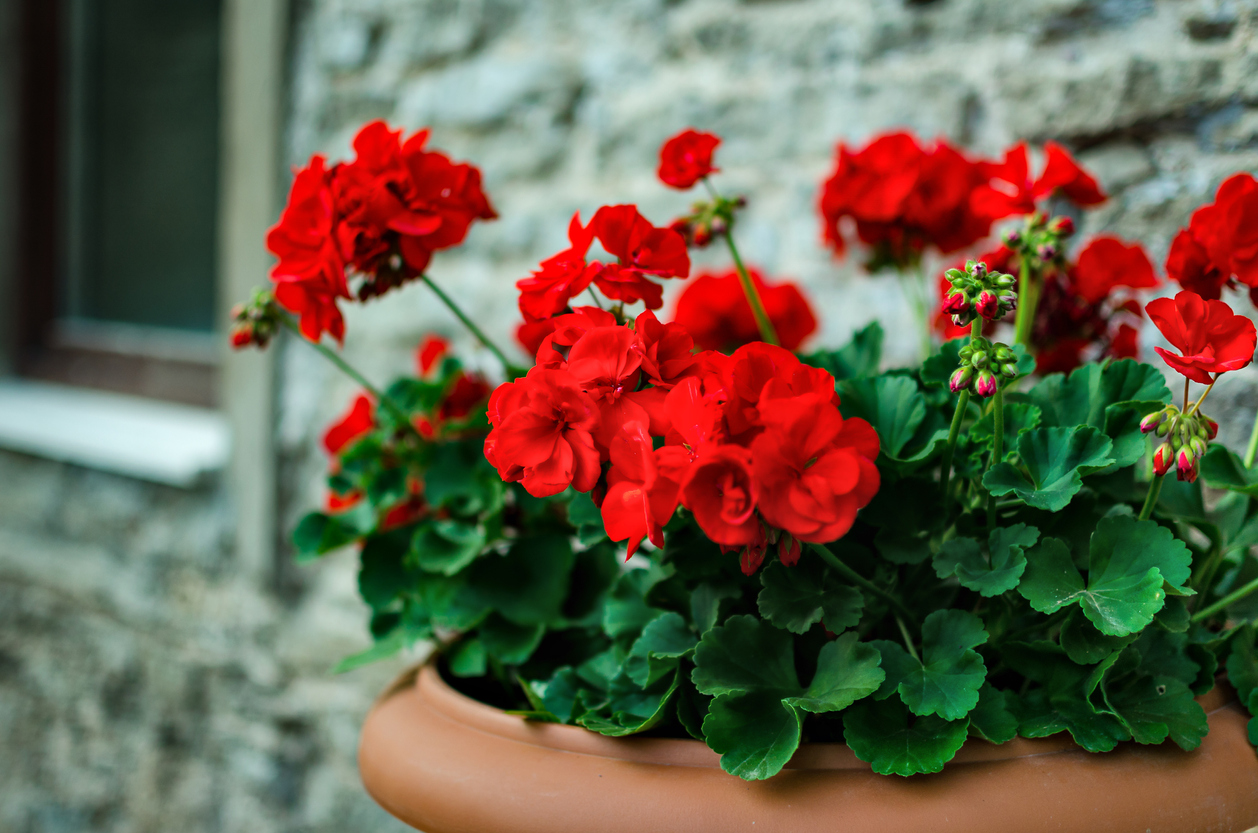
Photo: iStock
Geranium is another plant that likes to sleep the winter away. Dig the plants out of the ground before the first freeze, and gently knock the soil off the roots. Allow the plants to dry in a cool, shady location for a couple of days. Place the plants upside down in a paper bag and close the top. Store them in a cool, dark location that stays between 55 and 60 degrees. About 2 months before the last frost date, trim the stored geraniums and plant them in moist potting soil with two leaf nodes below the soil line. You also can propagate cuttings or bring potted geraniums indoors to a sunny window.
Culinary Thyme (Thymus vulgaris)
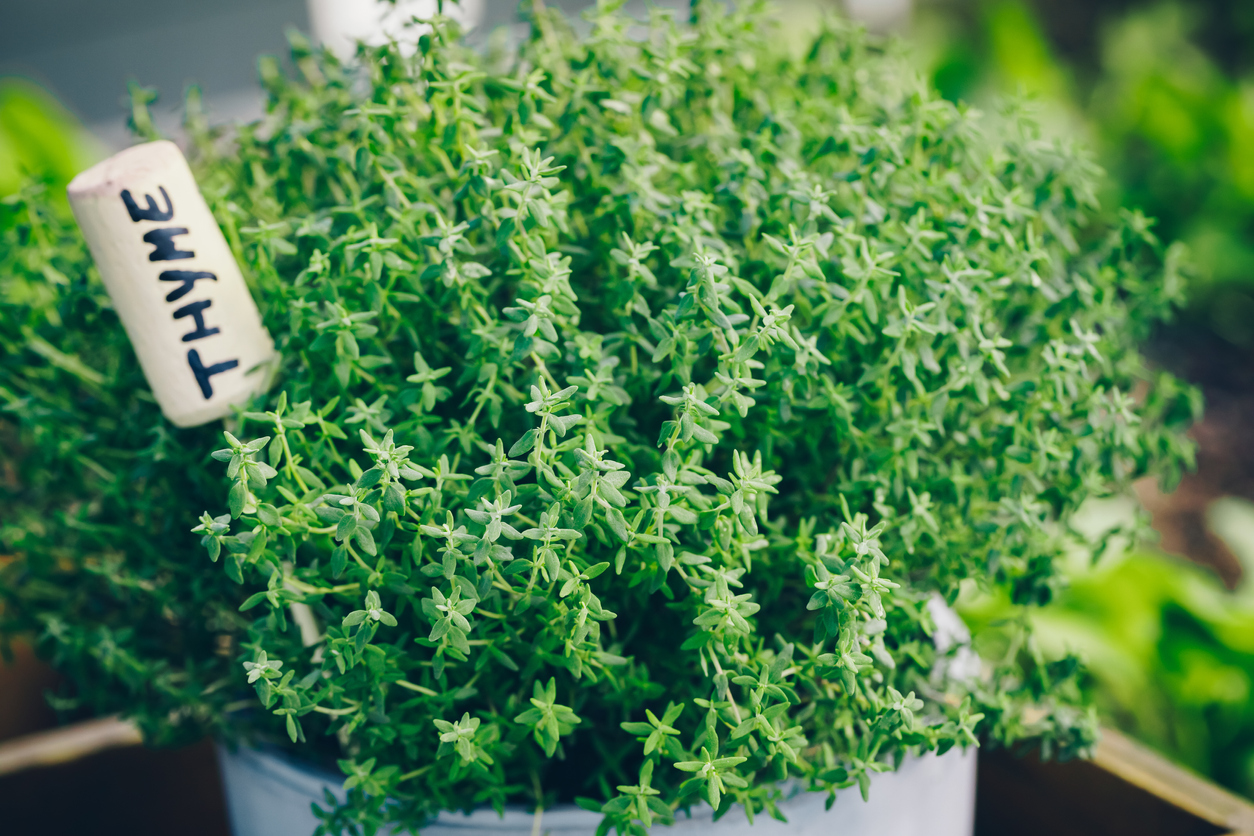
Photo: iStock
Thyme is a flavorful and aromatic perennial herb, but a tender one in regions 5 or lower. Plant culinary thyme in a container in spring, keeping it in a sunny, bright location with well-draining soil. Bring it indoors for winter before the first frost. If the herb’s roots are peeking though the bottom of the pot or it looks crowded, repot the thyme when you bring it in. It also can be divided easily. Be sure to place the container near a sunny window with a western or southern exposure in a room that stays between 60 and 70 degrees Fahrenheit for most of the day. Prune or pinch off flowers to preserve the herb’s flavor. Water as needed, letting the container dry out between watering. You can fertilize every week or two with a diluted solution of fish emulsion or liquid seaweed. Harvest sprigs as needed for winter dishes.
Banana (Musaceae family)
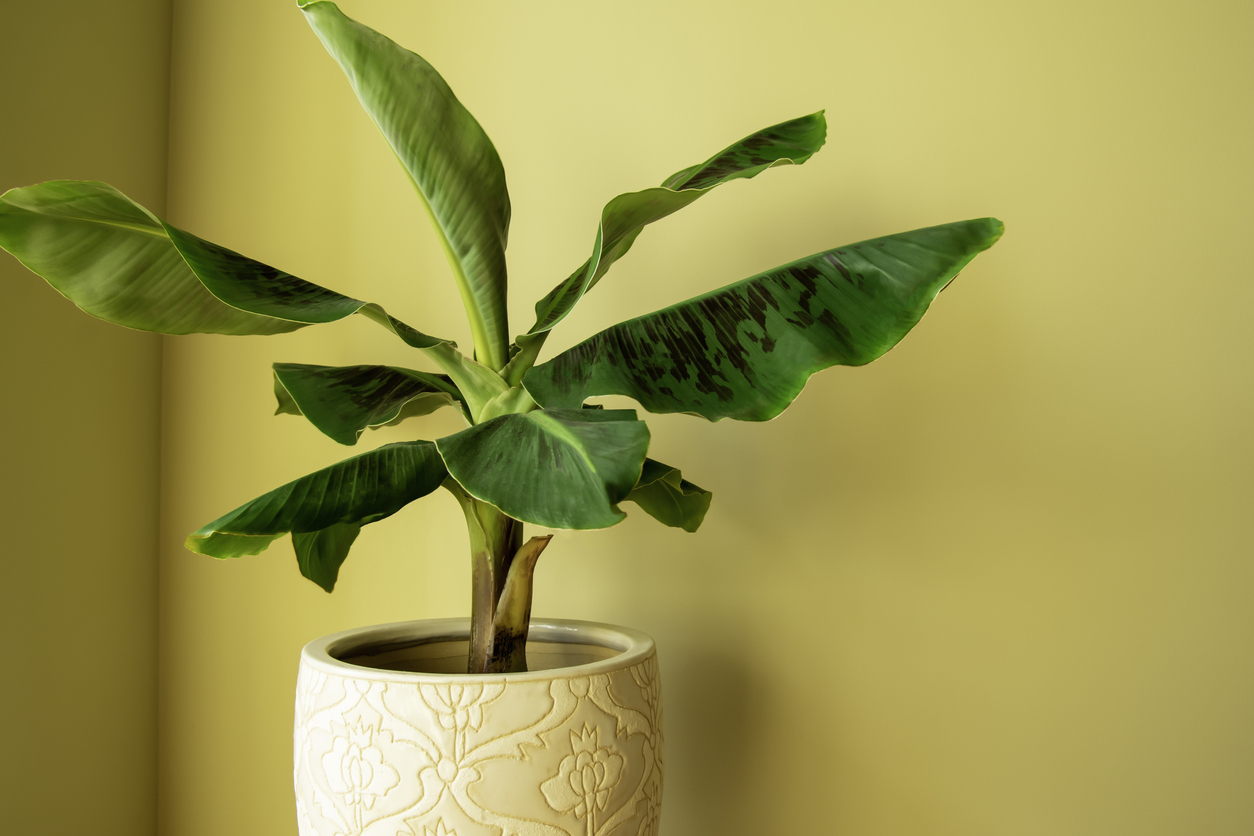
Photo: iStock
Although Musa basjoo, Musella lasiocarpa, and a few other banana trees are quite cold hardy, most will not tolerate extended freezing temperatures. Potted banana plants can be brought indoors to a bright, sunny room to spend the winter in a slowed active state. They can take up some space indoors, so you also can help them sleep through winter. As the weather cools, gradually reduce watering. Then, before the freeze, cut the plant to 6 inches in height and move it to a dark, cool location. Keep the soil barely moist until the weather warms in the spring.
Cordyline (Cordyline fruticosa)
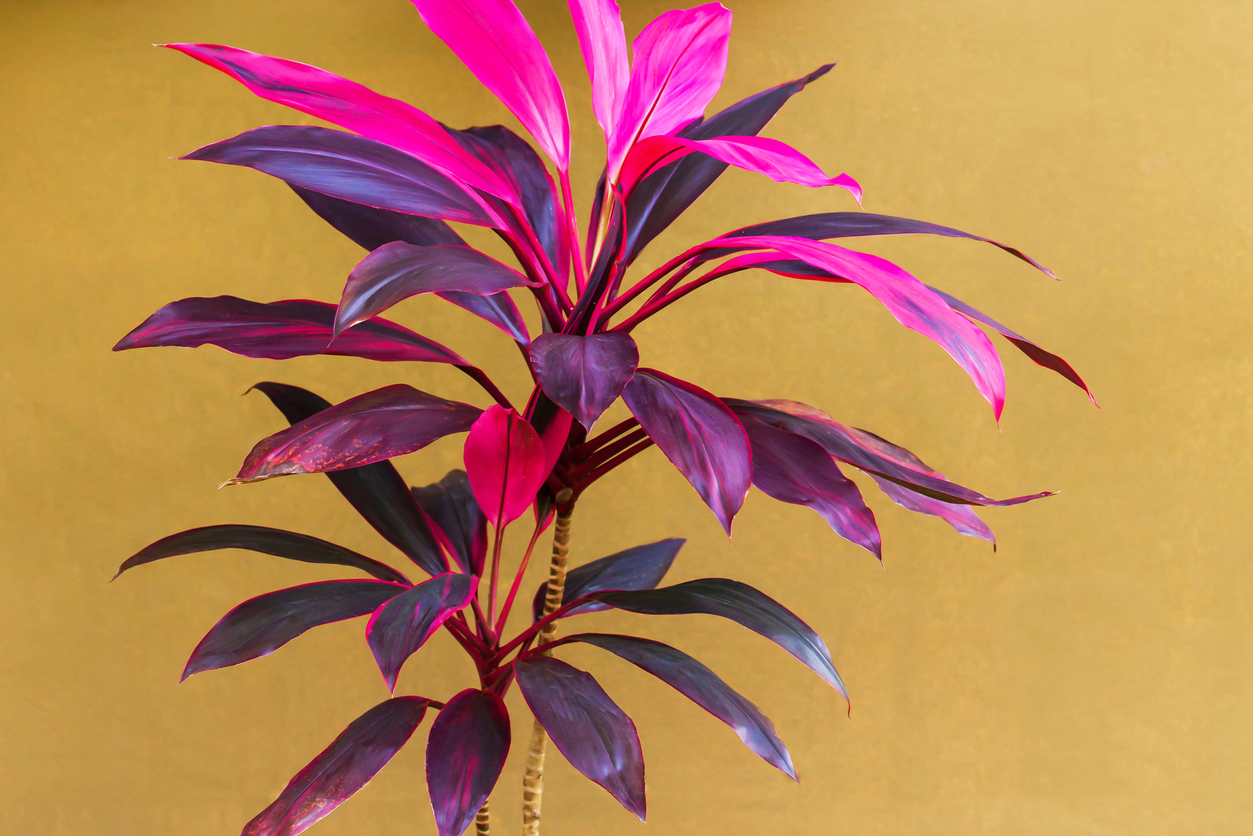
Photo: iStock
The stunning evergreen cordyline is hardy only to the warmest growing zones, but potted cordylines can move indoors as soon as temperatures dip into the 60s. Place them in a spot with good ventilation and consistent indoor temperatures; avoid placing them near air vents or drafty areas. Increase humidity around cordyline by situating it in a humid room or on a saucer filled with pebbles and water, and avoid fluoride-treated tap water. Although the plant does not require dormancy in winter, it does like a rest, so cut water some during fall and winter.

All You Need to Care for Your Lawn & Garden
Keeping your grass green and your plants thriving doesn’t just take a green thumb—it starts with the right tools and supplies.